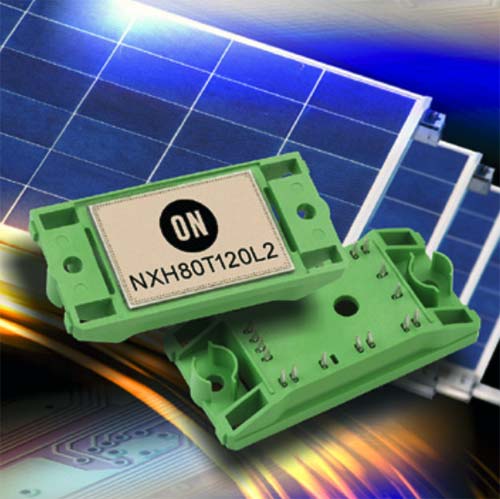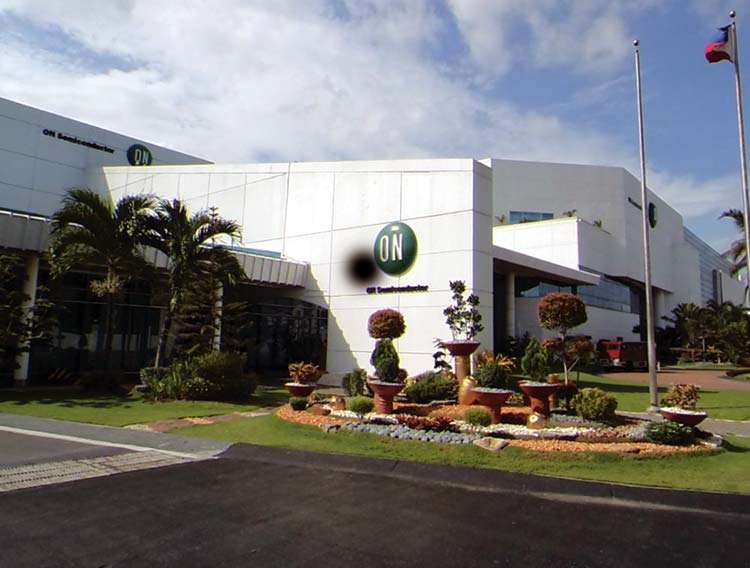
Over the past two years, there has been a huge demand for electronic and automotive products among the people, which is posing a huge challenge to the global chipmakers to meet the same. The massive growth of the Internet of Things (IoT), artificial intelligence (AI), and the current augmenting demand from high-tech industrial sectors and the IT hardware industry would proffer more barriers to the supply chain of semiconductors. With the outbreak of the global coronavirus pandemic, the supply chain of semiconductors has already been disrupted, which has further impacted the production scale of chipsets. Now, the recent Russian and Ukraine border scuffle has put another challenge on the semiconductor industry because 90 percent of the USA's semiconductor grade neon is produced by Ukraine. This gas is imperative for the lasers utilized in chipset manufacturing. While on the other hand, Russia provides around 35 percent of the US’s palladium supply. On the one hand, we have started witnessing an improvement in this sector, but on the other hand, new challenges are now disturbing the sector. In this regard, we spoke exclusively to Hassane El-Khoury, Chief Executive Officer and President at onsemi about the new challenges of the semiconductor industry, the company’s investment plans to build the industry, and what’s in store for the sector by the end of 2022.
Q. When do you think the chipset shortage will come to an end and would return to normalcy? What are the various steps required to help it return to normalcy?
Based on interactions with customers and channel partners, we believe that the current semiconductor industry supply-demand imbalance will likely persist through 2022 and into 2023. As semiconductor vendors increase supply and customers fulfill pent-up end demand, the temporary imbalance should subside. However, we are already engaged with customers on extending our LTSAs well beyond 2024 based on their request to guarantee support well into the future.
Going forward, short-term and long-term factors are required to reduce the impact of the chip shortage for chip buyers and OEMs. According to SIA, the industry’s short-term focus would be to ensure optimal utilization of the current fab capacity available. Building a new semiconductor fab takes on average at least two years. We see an increasing focus on this, that’s resulted in ramped up wafer starts and record chip sales, especially in the automotive segment.
As mentioned above, the delta between supply and demand is highly affected by rapidly increasing semiconductor content in automotive and industrial applications. In the automotive industry, this is seen in the push for advanced electric vehicles, infotainment, energy efficiency, the use of LED lighting, and advanced driver assistance systems. For industrial customers, the heightened need for semiconductor content is driven by the use of alternative energy sources, the need for more energy efficiency, and factory automation, among others. Essentially, our customers are doing what we’re doing. They are moving production to strategic and high-value product lines consistent with today’s market trends.
Long-term and consistent with our fab-liter strategy, we have taken the first steps towards rationalizing our manufacturing footprint by entering into a definitive agreement to divest our South Portland, Maine fab and closing on the sale of our 6-inch fab in Belgium. By transitioning production to more efficient fabs within our network, we will eliminate the fixed cost and lower unit costs while ensuring a consistent supply of products to our customers. This will allow us to further expand both the capacity for products in our strategic markets and our gross margin over time given the cost benefits. We are also very pleased with our accelerated progress in ramping our 300-millimeter manufacturing processes at our East Fishkill fab that has become a billion-dollar investment in the making.
The acquisition of GTAT expands our leadership in silicon carbide and provides our customers the assurance of supply required to support this rapidly growing market. We are planning to quadruple the output from GTAT by the end of 2022. Lastly, I expect that ongoing innovation in semiconductor technology and other intelligent technologies will help the supply trajectory. We are seeing the industry take calculated steps through increased CapEx spending and expect that there will be a clear trend toward sustained and increased levels of CapEx reaching record numbers.
Q. The semiconductor industry is surrounded by several challenges in terms of production and is not able to meet the demand of various industries. So, what are the current challenges now involved in the sector? How is onsemi, as one of the leading semiconductor manufacturing companies, tackling these challenges and helping the industry to grow again?
2022 is expected to be an exciting, albeit challenging, year as OEMs are seeking to fulfill pent-up demand in many sectors. In addition to the global pandemic continuing to impact supply chains, the demand for semiconductors is increasing due to quickly growing semiconductor content in automotive and industrial applications. New applications and heightened expectations for existing applications require the constant development of new, higher-performance technologies. Therefore, the semiconductor industry as a whole continues to experience constrained supply despite many semiconductor suppliers increasing their production.
At onsemi, we have been able to address supply challenges by making selective investments in our internal capacity to relieve bottlenecks in key strategic areas. By leveraging relationships with external manufacturing partners, we successfully obtained additional capacity and will continue to collaborate as we seek additional capacity. To reduce risks related to our investments in CapEx to supply, onsemi is securing mutually beneficial long-term supply agreements (LTSAs) with key customers. These agreements give us much-needed visibility into future demand for more accurate capacity planning while simultaneously providing supply assurance to our customers. Additionally, some customers have co-invested CapEx with onsemi to have supply assurance while our risk is reduced.
Going forward, our intelligent power and sensing technologies enable customers to differentiate and win in rapidly growing markets. With our revamped strategy that was announced last year on August 5, we are “doubling down” on high-growth and high-margin strategic opportunities, pursuing a fab-liter manufacturing strategy, and a commitment to achieving net-zero emissions by 2040. We understand that it is an ongoing process and we are building a war chest that will allow us to execute our vision.

Source: OnSemi
Q. Is onsemi doing investments in the US and other parts of the world? Can you please explain your international expansion plans and your revenue expectations? Some of your rivals are also following the same strategy.
We are a global company with product design centers in 21 countries and 10 solution engineering centers spread across Korea, Italy, China, Germany, Japan, and the U.S.
Our disciplined execution of transformation initiatives in 2021 resulted in record financial performance and achievement of our financial targets ahead of the stated timeline. In Q4 '21, we announced a record quarterly revenue of $1,846.1 million, and record GAAP and non-GAAP gross margins of 45.1% and 45.2%, respectively. Our fiscal year revenue in 2021 hit a record of $6.74 billion representing 28.3% year-over-year growth. Driven by our highly differentiated intelligent power and sensing portfolio, the outlook for our business remains robust as evidenced by more than 60% year-over-year growth in our design win funnel.
As mentioned above, to support the steep growth over the next few years, we plan to more than quadruple the capacity of our SiC substrate operations exiting 2022 and intend on making substantial investments in expanding our device and module capacity. In 2022, we expect our SiC revenue to more than double year-over-year as we continue to ramp with our existing customers and begin shipments to new customers under our LTSAs.
These results and outlook are only possible with the dedication of our international teams that is focused on execution and delivery of exceptional value for our customers. We have brought in leaders with strong performance records and promoted from within, with a focus on accelerating our path for growth and margin expansion over the next five years. We continue to expand gross margins as we shift our mix into these high-value strategic markets while ramping new products, rationalizing our manufacturing footprint, and improving our overall cost structure.
Q. What is your current business model and strategy and how far it has changed since the COVID-19 pandemic?
COVID-19 has had an undeniable impact on the world and how we think about business. Before Analyst Day 2021, we spent several months realigning our strategy and rationalizing our product portfolio, and realigning our investments to better deliver market-leading and differentiated technologies.
Under the new name “onsemi” and tagline, “Intelligent Technology. Better Future.”, we have sharpened our strategy to break through traditional thinking and market barriers to drive innovation and create game-changing solutions that solve our customers’ most difficult design challenges and create value for our shareholders. onsemi is driving a culture of disruptive innovations that envisions the future, empowers the designs and technologies to accelerate breakthrough solutions for the sustainable ecosystem. The goal is to have an organization that can react quickly to changing business conditions and can effectively make decisions in the best interest of shareholders.
At onsemi, we have an immense opportunity to do our part in achieving a net-zero economy with our strong portfolio of intelligent power and sensing technologies. Going forward, we will enable our customers’ success, drive a better future for the next generations, and support the achievement of their own climate initiatives, propelling the sustainable energy revolution.
Q. Can you please elaborate on the various kinds of semiconductors/chipsets you are currently manufacturing? Which are the ones you have in your pipeline in the coming few years?
We offer a broad portfolio of highly differentiated intelligent power and sensing solutions. These comprise high and mid-voltage power devices, power modules for EV and industrial applications, CMOS image sensors for ADAS and industrial applications, and power management integrated circuits for auto and industrial applications. We stated on our Analyst Day that over the next five years, we expect auto-industrial to become about 75% of our total revenue. We continue to maintain strong momentum in the industry and see accelerating demand for our products in the automotive and industrial end markets internationally. Additionally, the trends in adjacent markets, such as cloud and power, present new opportunities to leverage similar technologies in new markets. Increased automation and greater energy efficiency will be significant drivers within the industrial space during 2022. We will also be ramping up several new product families that offer high resolution suitable for the latest applications.

Q. Of late various smartphone and electronic companies have also decided to manufacture their own chips. For instance, one of the biggest electronics product companies in Cupertino has also started making its own chips. In this regard, where do you see the future of unique chip makers like onsemi? Will it pose a huge threat to chip-making firms?
onsemi's products are highly differentiated and require specialized manufacturing; they cannot be obtained through foundries. Therefore, our customers would be unable to independently manufacture the caliber chips we supply them.
Our focus is to look at what we need to do for capacity in order to get there. It’s not as easy as just investing in technology. As we continue to see the high growth of megatrends such as vehicle electrification, advanced safety, and alternative energy, the biggest impact we can have is through our power devices, such as silicon carbide MOSFETs, to ensure maximum energy transfer from the battery to wheels. We are confident that our high-growth and strategic markets will enable us to drive disruptive innovation and create game-changing solutions irrespective of the competitor landscape.
Q. What would be your roadmap in the coming five years? Do you have any further plans to expand your manufacturing units in India?
onsemi's vertical manufacturing chain, in-house SiC wafer capability, and internal packaging infrastructure give customers the confidence to launch keystone vehicle platforms with a partner of trust. As we shifted our focus on the high-value markets of automotive and industrial, post the price-to-value discrepancies and improved manufacturing efficiencies, we expanded our margins to achieve the target model ahead of our stated timeline.
We are very bullish about what we want to achieve in the next five years. Over the next three years, we’ll use new product engines to fuel 2025/26 and beyond. We need the capacity to support that growth and that comes with LTSAs with key customers. As we execute, we will see our war chest grow. Our desire to drive disruptive change will shape our manufacturing footprint and capital investments. We want to be as efficient as possible and ensure that customers can rely on our manufacturing footprint. We will continue executing our fab-liter strategy to reduce our fixed cost structure and overall unit costs across the portfolio as we exit subscale fabs over a multi-year period.
We have multi-year visibility on our silicon carbide LTSAs that will get us to exit 2023 with a $1 billion run rate. We have already started ramping up our efforts and will continue to do so heavily in the second half of 2022, which will be 2x more than what it was in 2021. By optimizing our manufacturing network, onsemi will eliminate fixed costs and lower its unit costs driving long-term and sustained gross margin expansion while ensuring a consistent supply of products to our customers. As we implement these efforts to optimize our fab-liter manufacturing strategy, we carefully analyze it and where there is a need for expansion.

